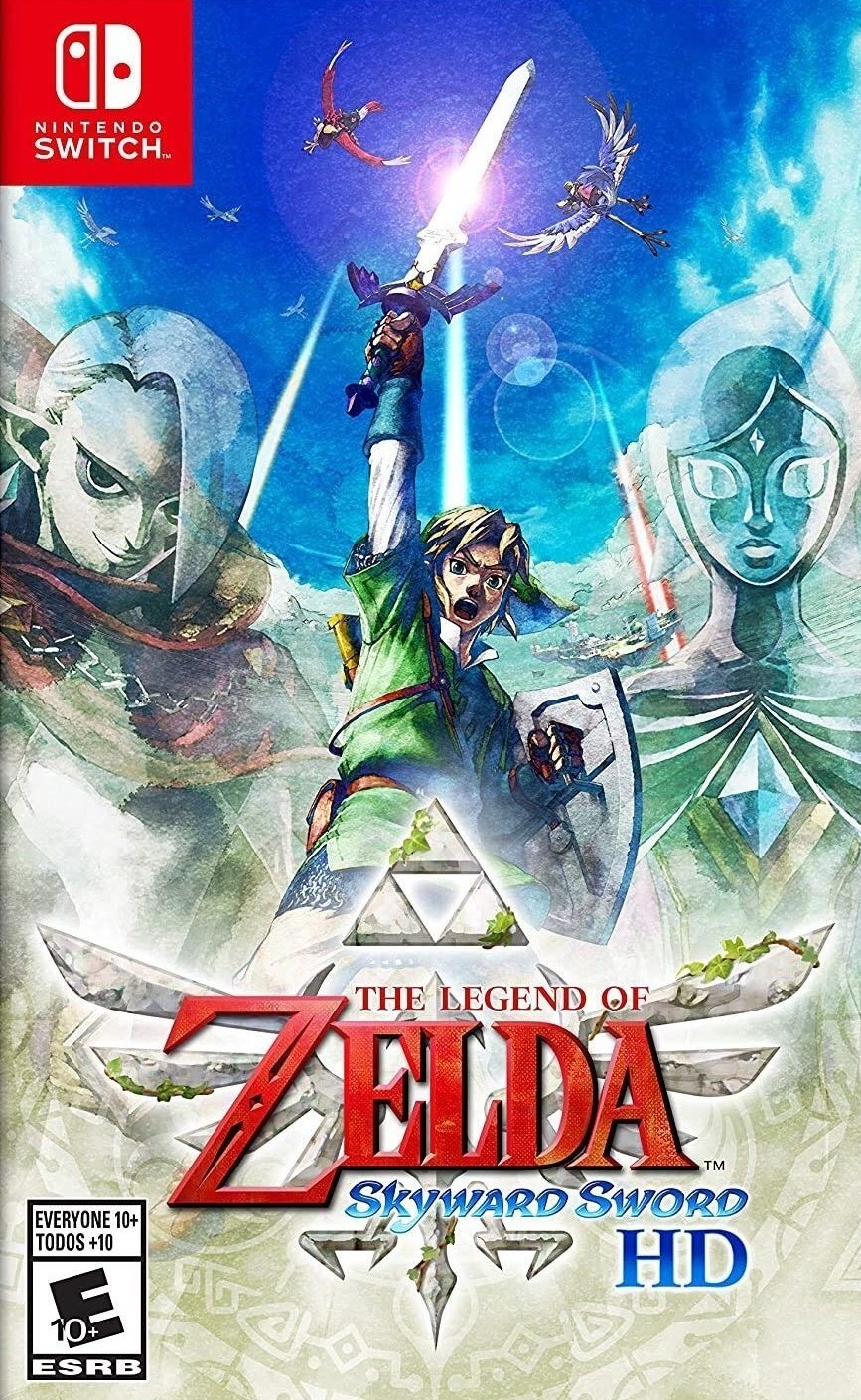
Let me preface this review by saying that I do not care much for Nintendo’s big-name franchises such as Mario and Zelda, particularly regarding the three-dimensional iterations of either series, which to me don’t quite carry the spirit of their 2-D brethren. There are installments of the Legend of Zelda franchise that I did enjoy such as Link to the Past, albeit largely due to getting too good at the game through repeated playthroughs during my childhood, adolescence, and early adulthood. One of the entries I had missed out on was Skyward Sword on the Wii, although it would receive a remaster on the Nintendo Switch, The Legend of Zelda: Skyward Sword HD.
When beginning a new game, the player can choose motion controls similar to the Wii version or button-only controls that would rather prefer them, and as the former was one of the chief complaints with the original version, I opted for the latter choice. The game itself features the backstory of the Demon King Demise laying waste to the land in want of the Triforce, with the goddess Hylia leading the survivors into the sky so she can war with the demonic deity, with the existence of the Surface ultimately forgotten among the inhabitants of the sky island that comes to be known as Skyloft.
The backstory is good, although the narrative itself is fairly derivative, the initial skybound world above a surface somewhat filched from Final Fantasy III, a storyline twist later on resemblant of a plot element of Lunar: The Silver Star, and the concept of time travel done to death. The plotline ultimately delves into the cliché of Link rescuing Zelda, not yet a princess, from the forces of evil, and is generally a disappointment. As well, while the translation is certainly legible, the localization team made some irritating dialogue decisions such as having the spirit of Link’s sword, Fi, speak in a robotic tone talking of calculations and probabilities and such, making the plot and writing overall a detriment.
Furthermore, even with button-only controls, the general game interface takes a lot of getting used too, with many needless complications regarding things such as throwing and rolling bomb flowers. The swinging of Link’s sword in different directions via use of the bottom-right joystick does work at times and adds strategy to some battles against standard enemies and bosses, most of the former mercifully optional, but there are a great many negative gameplay tropes such as having to go stealth a few times (with the “silent realms”, where Link has to gather fifteen nodes and need to start from the beginning if attacked by a guardian spirit, qualifying among one central instance).
Throughout his quest, Link has to solve many puzzles, most utilizing the tools he receives, and sometimes use them against bosses. Things at first are fun, although there are a great many portions that led me to reference the internet repeatedly, which is not something anyone should ever have to do when playing a videogame. Link’s ability to hold reviving fairies and healing potions in bottles can take the edge off at times, although the camera can be awful, with the absolute lack of a radar/minimap hurting as well. In the end, the game mechanics become a chore far more than anything else.
The controls, as one could assume, don’t help. Skyward Sword ditches the series’ save-anywhere feature for save points, but autosaving does occur at critical instances; regardless the spacing of hard saving opportunities is at times inconsistent, and a suspend save would have been welcome. There’s also an in-game measure of playtime, although one has to converse with Fi to view it, rather than the developers just saving the time and annoyance by displaying the clock in the menus. The puzzles driving players to repeatedly reference guilds, walkthroughs, and in some instances diagrams, don’t help either, and all in all, the game is one of the most user-unfriendly I’ve had the displeasure of playing.
The soundtrack is full of old and new tracks, Zelda’s Lullaby among the former and some sweeping themes such as the flying theme among the latter, and is one area where the game doesn’t fall flat. The sound effects are good as well, although the voices consist mostly of grunting that can get tiring after a while, with Link’s vocals in particular being irritating, and the near-death alarm is annoying as always.
The remastered visuals look decent for the most part, with well-proportioned character models, fit coloring, and some good environs, though these show some blurriness and pixilation up-close, and the camera can mar the experience.
Finally, the game is one of the longer Zeldas, taking somewhere from twenty-four to forty-eight hours to finish, with a Hero Mode accessed upon completion, although frankly, subsequent playthroughs would be nothing short of excruciating.
In summation, I really, really wanted to like Skyward Sword HD, but it just didn’t love me back, given issues such as the lousy controls, even when selecting the option of making them button-only, the weak narrative and writing, and the middling aural and visual presentations. There are rare cases in which the game is slightly enjoyable at times, but it winds up to be one of the far weaker installments of a franchise that has its share of good and bad (in my opinion, mostly the latter) titles, and there are far better Nintendo Switch games out there.
This review is based on a playthrough of a copy borrowed by the reviewer.
The Good:
+A few gameplay portions passable.
+Some of the music is good.
+Graphics look okay.
The Bad:
-Even button-only controls are horrid.
-Incredibly-weak narrative and writing.
-Puts quantity above quality.
The Bottom Line:
One of the far weaker Zeldas.
Score Breakdown:
Platform: Nintendo Switch
Game Mechanics: 1.5/10
Controls: 0.5/10
Story: 0.5/10
Localization: 2.0/10
Music/Sound: 2.5/10
Graphics: 3.5/10
Lasting Appeal: 0.0/10
Difficulty: Artificial
Playing Time: 24-48 Hours
Overall: 1.5/10
No comments:
Post a Comment